The quilted green russulas are excellent edible species with a complicated history that is still evolving. This group of mushrooms with green(ish) cracking mosaic caps contains several species, especially in the eastern United States. Russulas are a common, widespread genus of mushrooms that often fruit in prolific numbers. Not all of them are edible, but this green quilted one is good to eat and a pretty find, too! In this guide, we are covering the three most well-known and defined quilted green russula species and how to identify and forage them.
- Scientific Names: Russula virescens, Russula parvovirescens, Russula crustosa
- Common Names: Quilted Green Russula, Green Cracking Russula, Green Brittlegill, Green Quilted Brittlegill, Moldy Russula, Crusty Russula, Green Quilt Russula, Green Cracked Brittlecaps
- Habitat: Mycorrhizal with trees on the ground
- Edibility: Edible
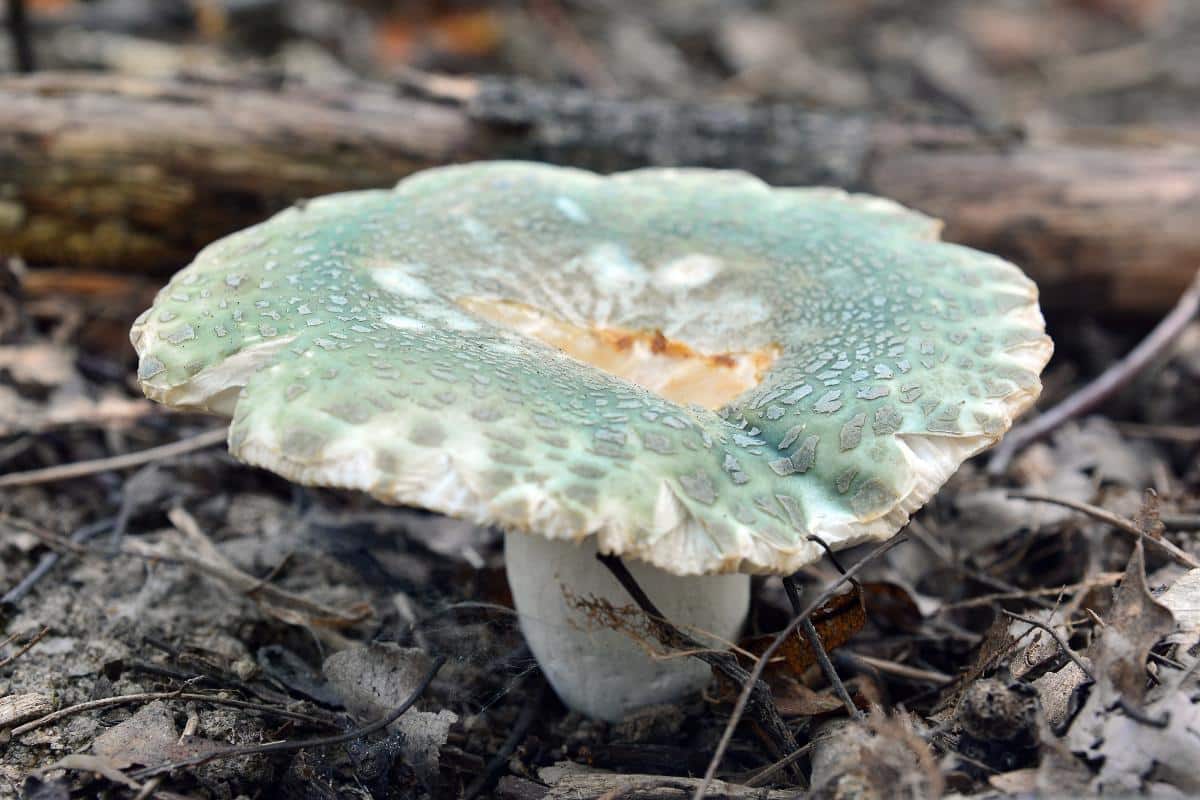
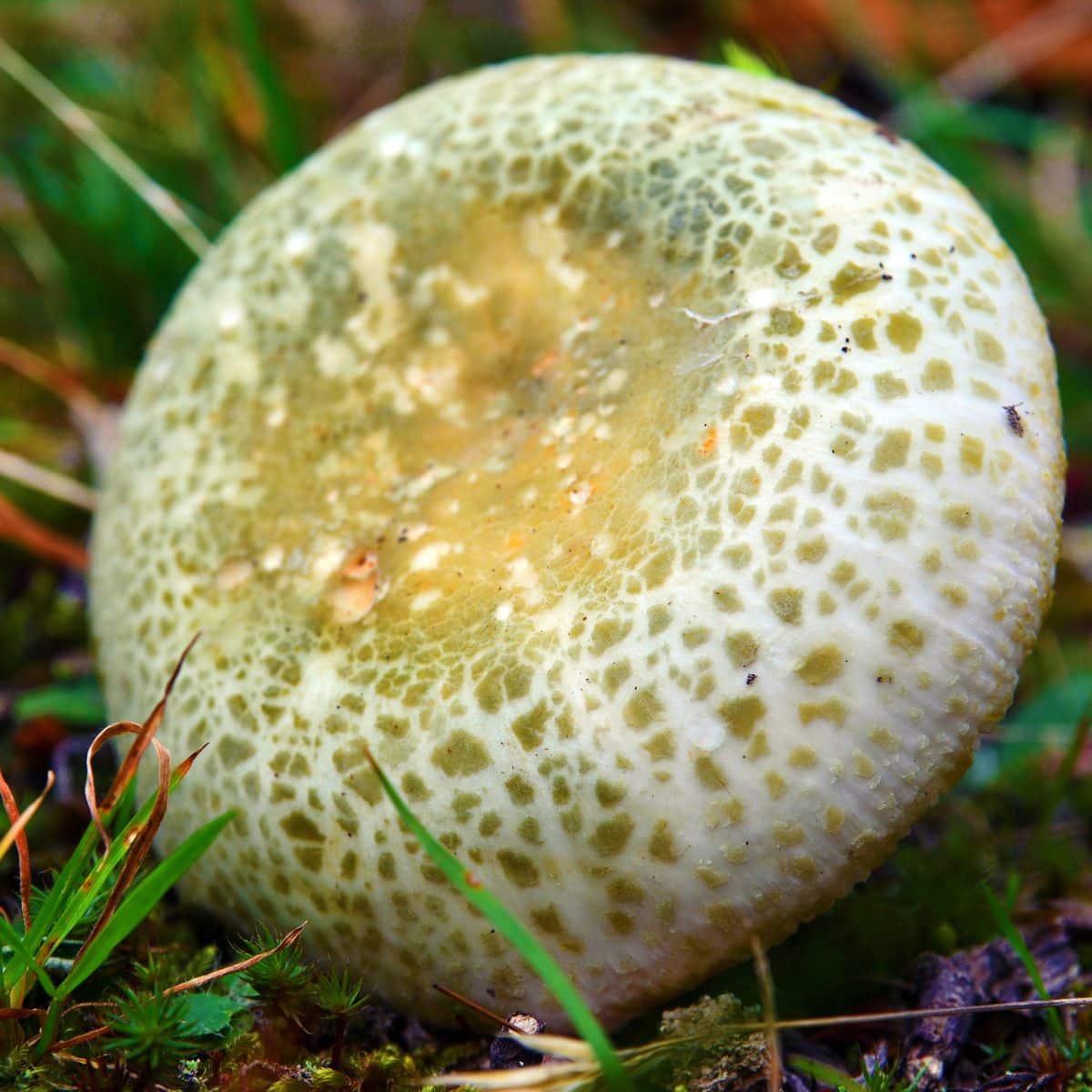
Jump to:
All About The Quilted Green Russulas
The original green quilted russula, also called the cracking russula, is Russula virescens, and it is widespread in Europe. In most guidebooks and online sources, you’ll see this name used. Whether this species actually appears in North America is up for debate. As with many species, we’re discovering that the European names we’ve been applying for generations are not accurate, and the North American species are actually different, even though they look almost exactly the same.
There are three primary species of quilted green russulas in North America, at least that are well-defined. It is likely there are a dozen or so different species in the group, especially in the eastern states. This species complex, called the virescens-custosa group, will hopefully be better defined sometime in the near future.
What all this means for the mushroom forager is that sometime the scientific names might change, but the edible mushroom and its defining characteristics will remain the same. Luckily, these species have no toxic lookalikes, and the distinguishing characteristics are quite distinguishable!
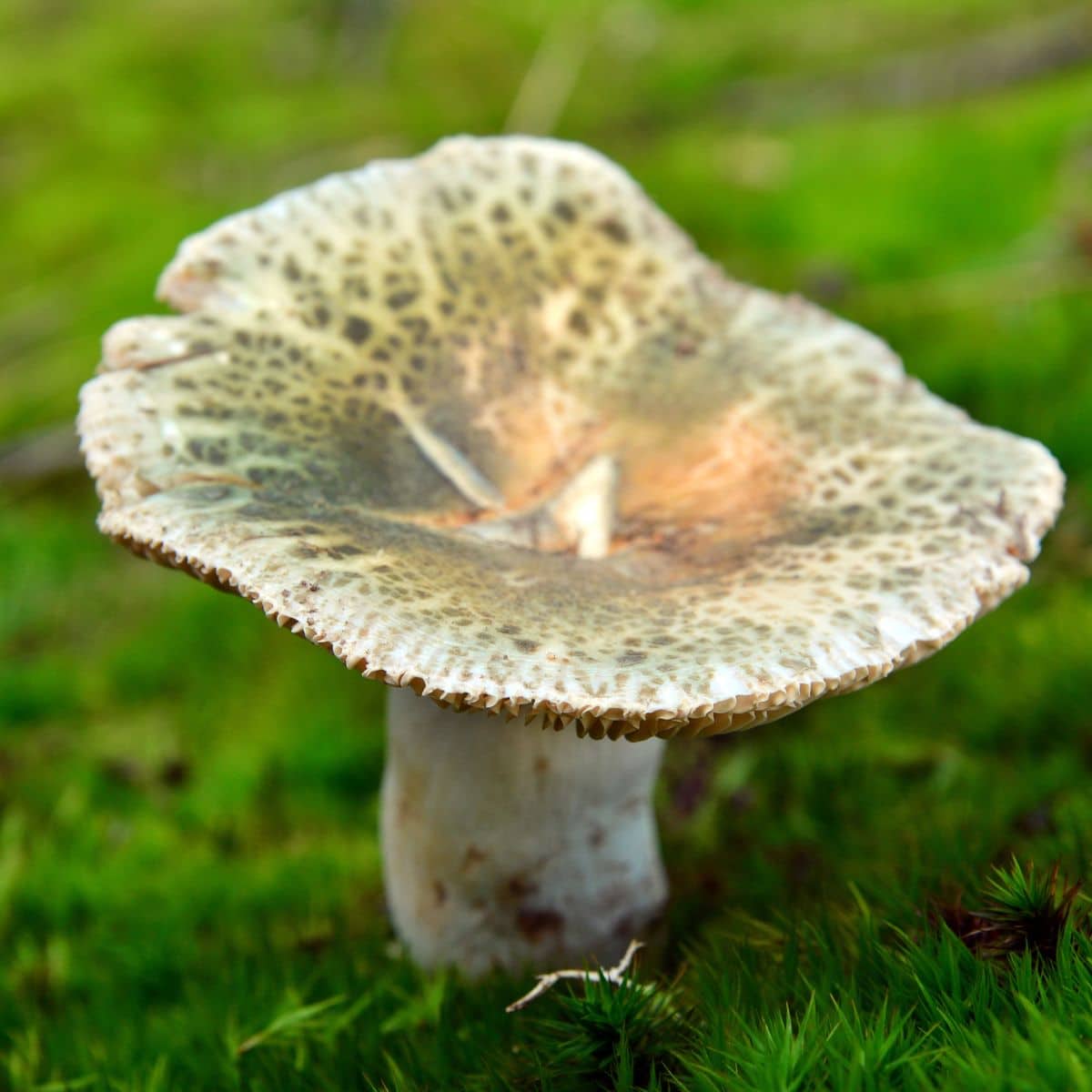
Quilted green russulas are popular in many countries. They are sold at open markets and used in traditional medicines in China. They are also commonly sold dried in Asia. Green quilted russulas are prized in Europe, as well, and especially in Spain. There, they are commonly grilled and sprinkled with salt.
The genus Russula, commonly known as Brittlegills, encompasses around 750 species globally recognized for their typically vibrant caps and significant size. These mushrooms are easily identifiable by their often brightly colored caps, brittle, attached gills, and lack of latex (a closely related lookalike, the milky cap genus, has gills that bleed a liquid latex).
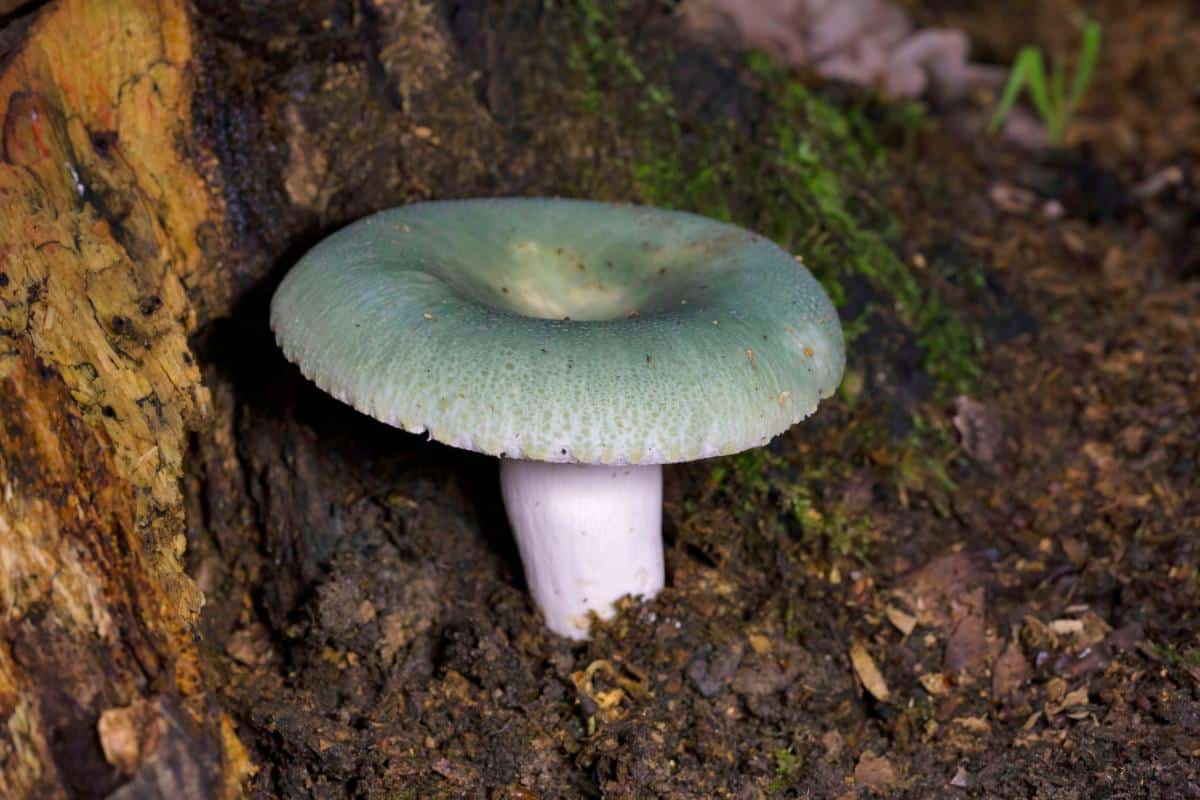
The Quilted Green Russulas: North American Species
Russula Virescens
This is the primary green quilted Russula that may or may not appear in North America. It is included here because it is still the most common name used in guidebooks for this species. And it might occur in North America.
Cap
The cap of this green quilted russula starts out rounded or dome-shaped. As it matures, it opens up and flattens out. It grows up to 6 inches in diameter, and the center of the cap is usually indented.
The most distinctive feature is the green color, most intense at the center, with blockish, radially dispersed patches. These patches vary in shade from gray to blue-green to grass-green, and their appearance can vary, with some having a few patches and others having many. The overall appearance is of a mosaic or cracked design across the greenish cap.
The edge of the cap is sometimes lined, meaning you can see the outline of the gills beneath the cap’s thin skin. This lining may be very slight to not at all. The cap’s “skin” can be peeled about halfway to the center, which is an important identification trait for russula species.
The flesh of this species is dense, white, and brittle. When snapped, the stem and cap will break easily. The flesh does not change color when cut.
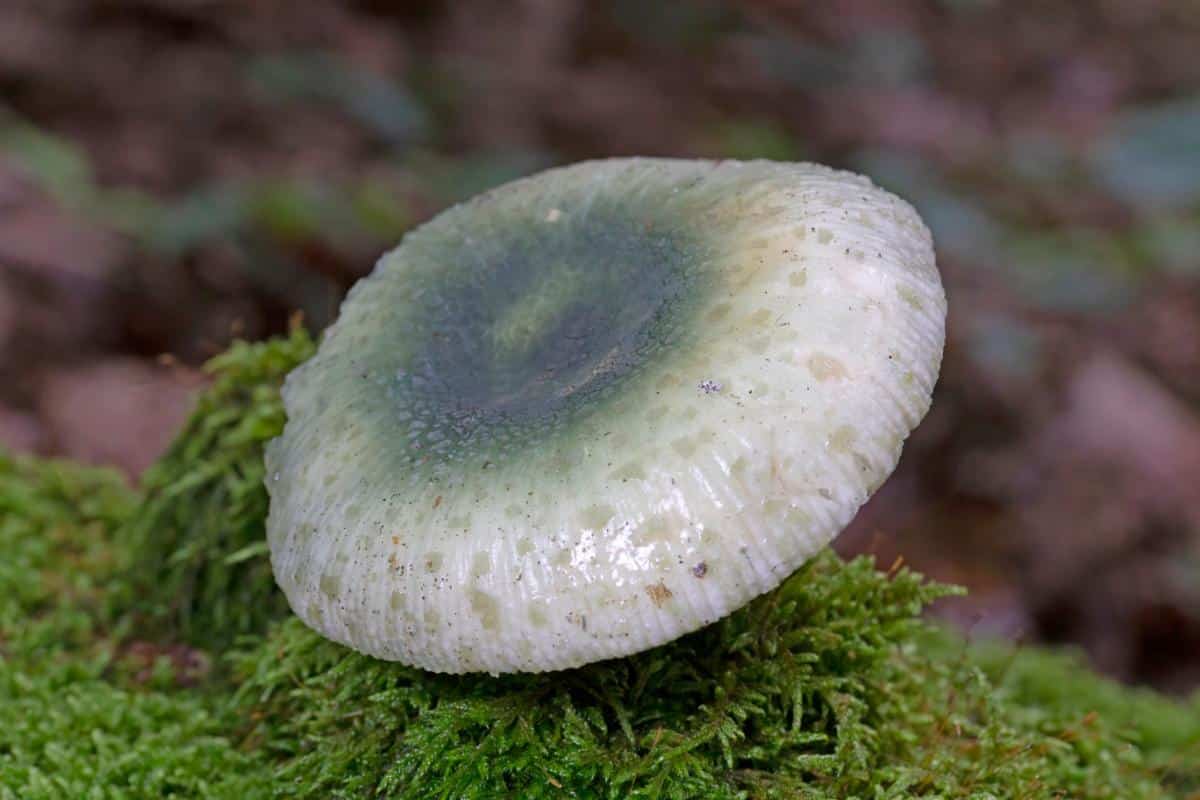
Gills
This mushroom has creamy white gills that darken with age. These gills are fairly crowded and mostly free from attachment to the stem. They are interconnected at their bases by veins.
Stem
The stem is cylindrical, white, and can reach up to 3 inches tall and 1.6 inches wide. It might have a whitish powder on the upper portion and can turn slightly brown when bruised.
Spore Print
The spore print is white.
Habitat
The green quilted russula fruits around hardwood trees but may also be found with conifers. It grows from the ground, never from wood or trees. It will grow singularly in scattered or dense groupings.
This species grows primarily east of the Rocky Mountains, but there are reports of it on the West Coast as well.
Season
Summer through fall.
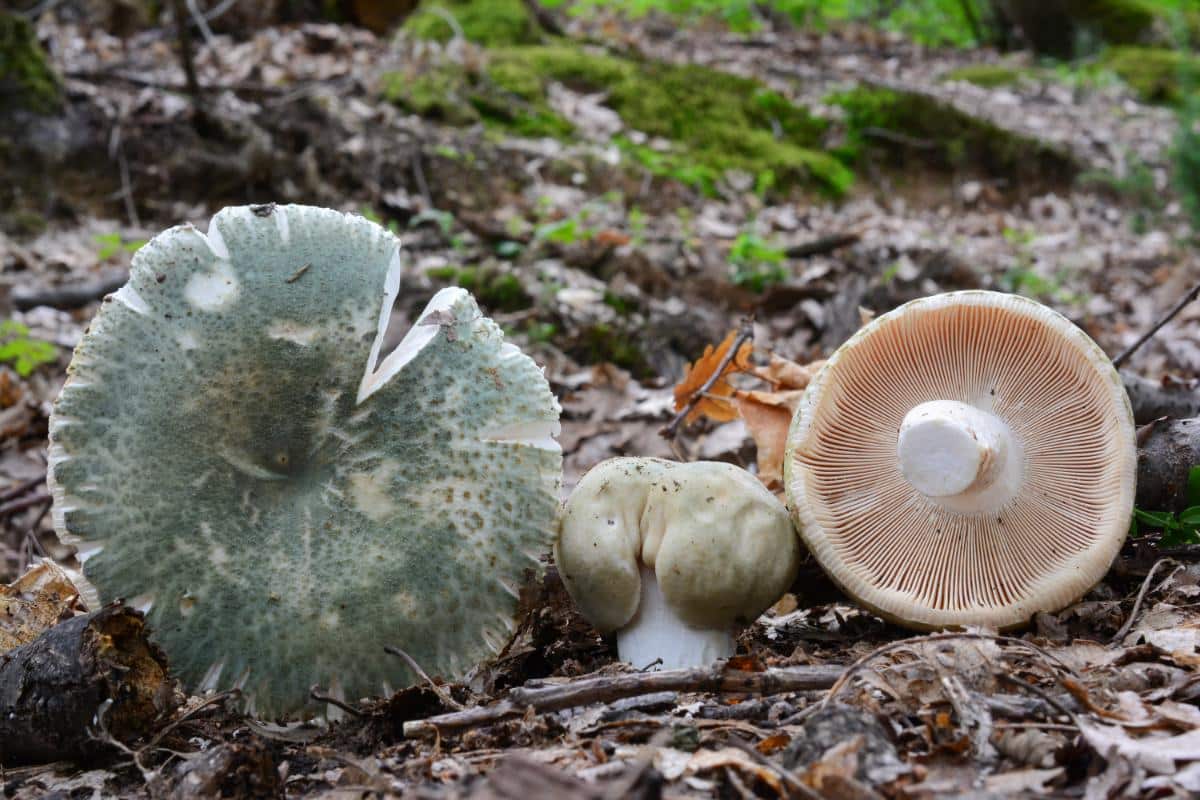
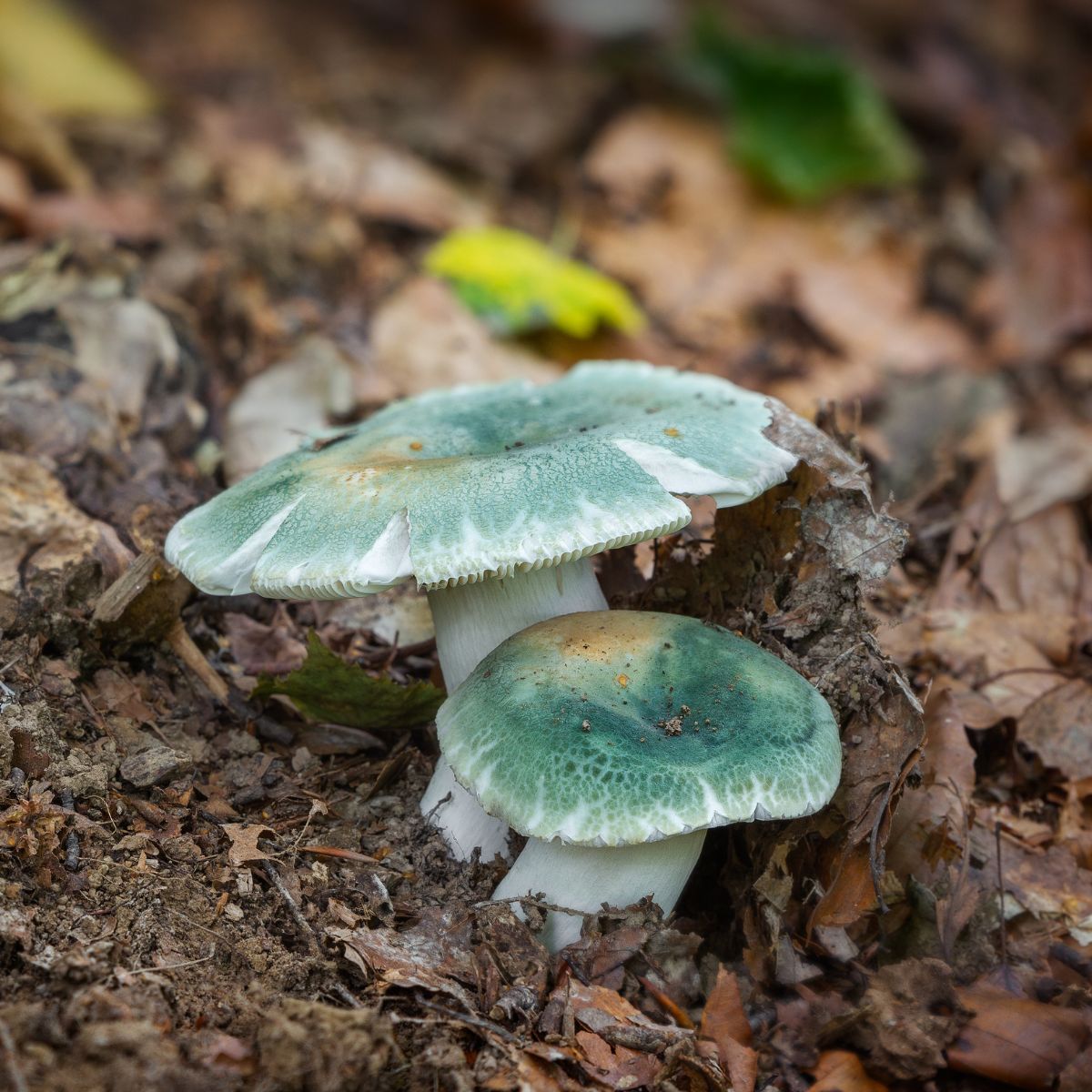
Russula Parvovirescens
This might be the primary green quilted russula in North America, at least on the east coast. However, since it is so commonly identified as R. virescens, it’s hard to say or know for sure which is more common. It was classified as a new to science species in 2006.
Russula parvovirescens is found in the eastern United States and is easily and often confused with Russula virescens due to their similar appearances. However, they can be differentiated by several features. Russula parvovirescens has smaller caps, typically measuring 1.6–3.1 inches in width, and a stem up to 2.4 inches long.
The cap of Russula parvovirescens tends to have a more bluish-green hue with larger patches and a lined margin. The flesh is white, dense, and brittle and does not change color when cut.
Habitat
This species occurs on the East Coast, from Maine to Texas. It grows primarily with hardwoods, with a preference for oaks. It will also fruit around conifers, though. This species grows singularly from the ground, and there may just be a few scattered around or a huge grouping.
Season
Summer through fall.
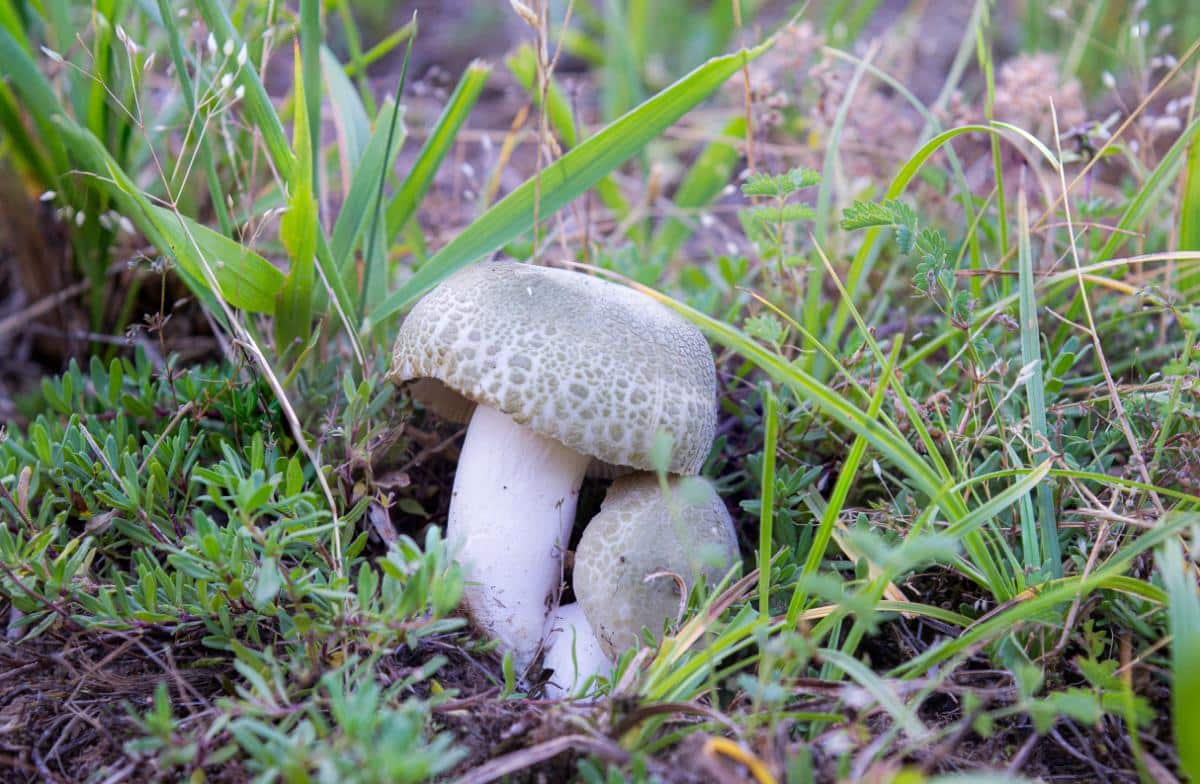
Russula Crustosa
This green quilted russula falls into the same family because of its genetics and mosaic cap, but it is yellowish-brown or olive instead of blue-green. This species is most common in the southeastern United States.
Cap
The cap is rounded when young but with age it spreads out and flattens. It often has a shallow depression in the center. The surface of the cap is dry and characteristically cracks into well-defined patches with fairly abrupt edges – the mosaic or quilted look.
The color varies from buff to yellowish-brown or faintly olive. When the mushroom is mature, the edge of the cap is visibly lined (you can see the outline of the gills through the thin cap flesh). The cap’s “skin” can be peeled about halfway to the center, which is an important identification trait for russula species.
The flesh is dense, white, and brittle. The stem and cap will break easily when snapped. It does not change color when cut.
Gills
The gills of Russula crustosa are attached to the stem and are close or crowded with some forking. Their color is white to creamy.
Stem
The stem reaches up to 3.5 inches long and is white, dry, and smooth.
Spore Print
The spore print of Russula crustosa is buff.
Habitat
This russula fruits in association with broadleaf trees, like hickory and oak. It can be found in mixed forests. This mushroom grows on the ground, never from wood or trees. It will appear singularly or in sparse or large scattered groupings.
It is an east coast only species
Season
Late spring through early winter.
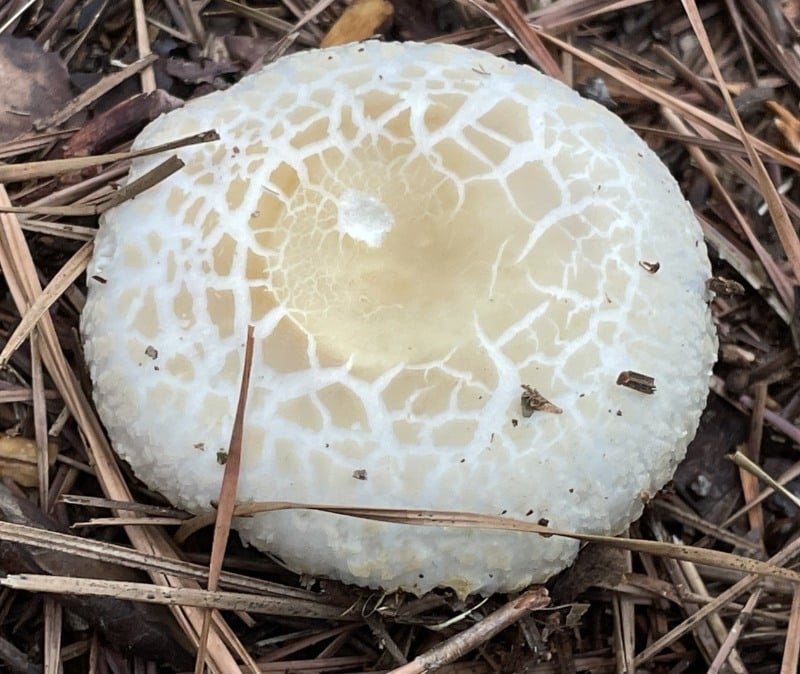
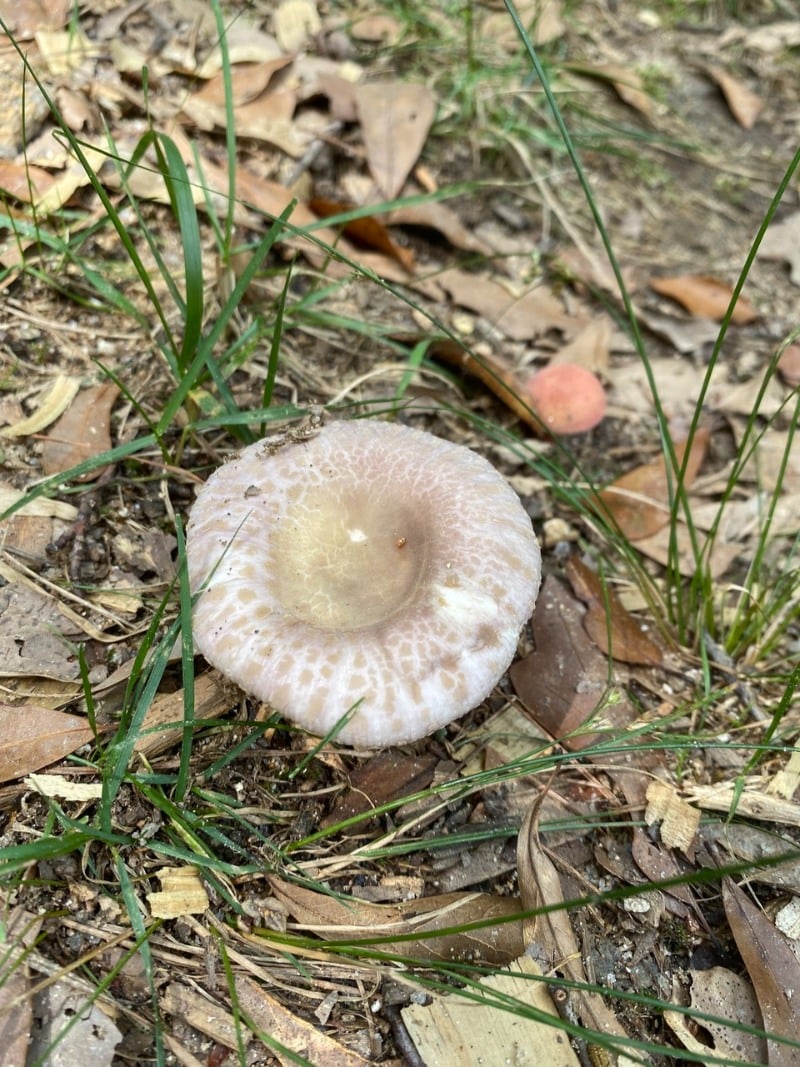
Comparing Russula Virescens and Russula Crustosa
Key Similarities
Both Russula virescens/Russula parvovirescens and Russula crustosa share a mycorrhizal relationship with broadleaf trees and typically grow on the ground in mixed forests. They appear either singly, scattered, or in groups. Their fruiting periods, from June to December, coincide in many regions, allowing for simultaneous foraging opportunities.
They both have white gills and white stems and mosaic, patchworked caps. Both these Russulas also have white, thick but brittle flesh that does not change color when cut. And their gills do not bleed a milky substance when cut.
Key Differences
Several key features should be noted when distinguishing Russula virescens/Russula parvovirescens from Russula crustosa. The cap of Russula virescens/Russula parvovirescens generally has a more cohesive, less delineated patchwork compared to the sharply defined, crust-like patches of Russula crustosa. And, it is more green compared to R.crustosa’s yellowish-brown cap. Additionally, the flesh of Russula virescens/Russula parvovirescens tends to break apart more readily and produces a white spore print.
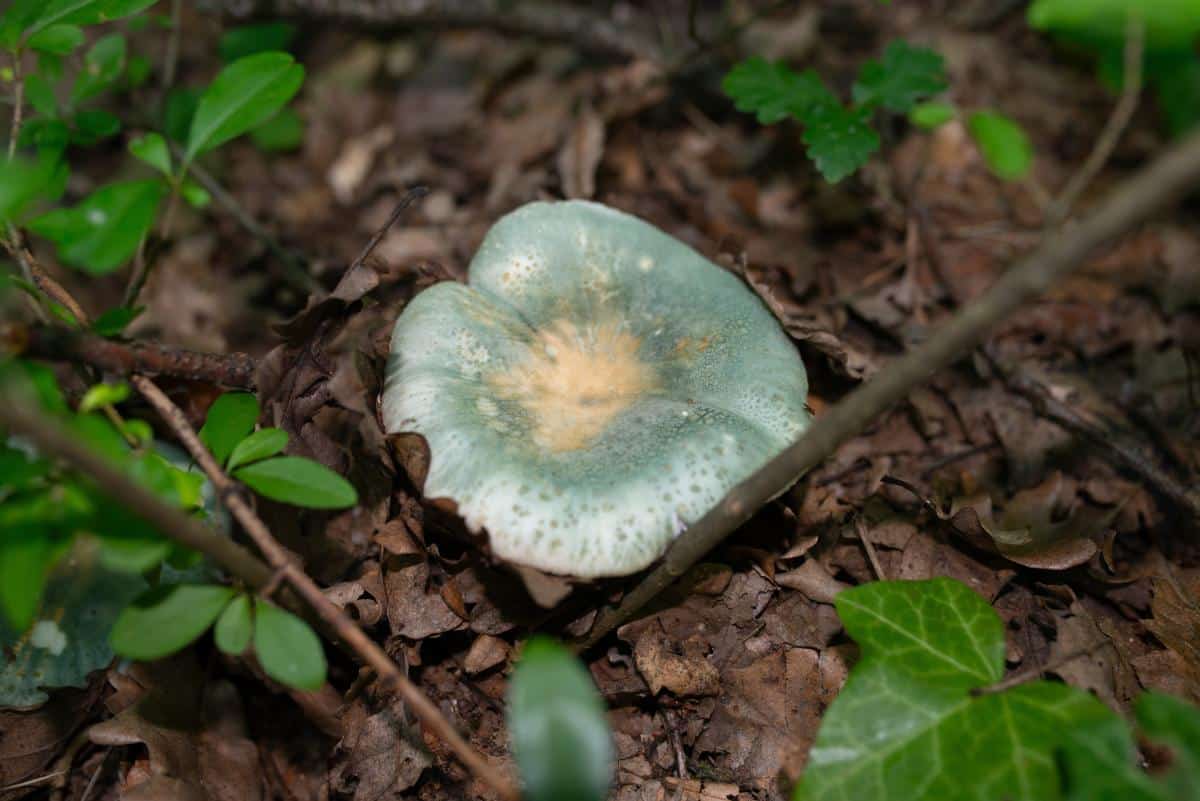
Quilted Green Russulas Lookalikes
Russula aeruginea and other Green Capped Russula Mushrooms
This is another Russula species that could be mistaken for Russula virescens or R.parvovirescens. This species, though, has a smooth, uniformly green cap that lacks the quilted or crustose patches characteristic of the green quilted russula. No other green-capped russula species are toxic, but some might not taste great.
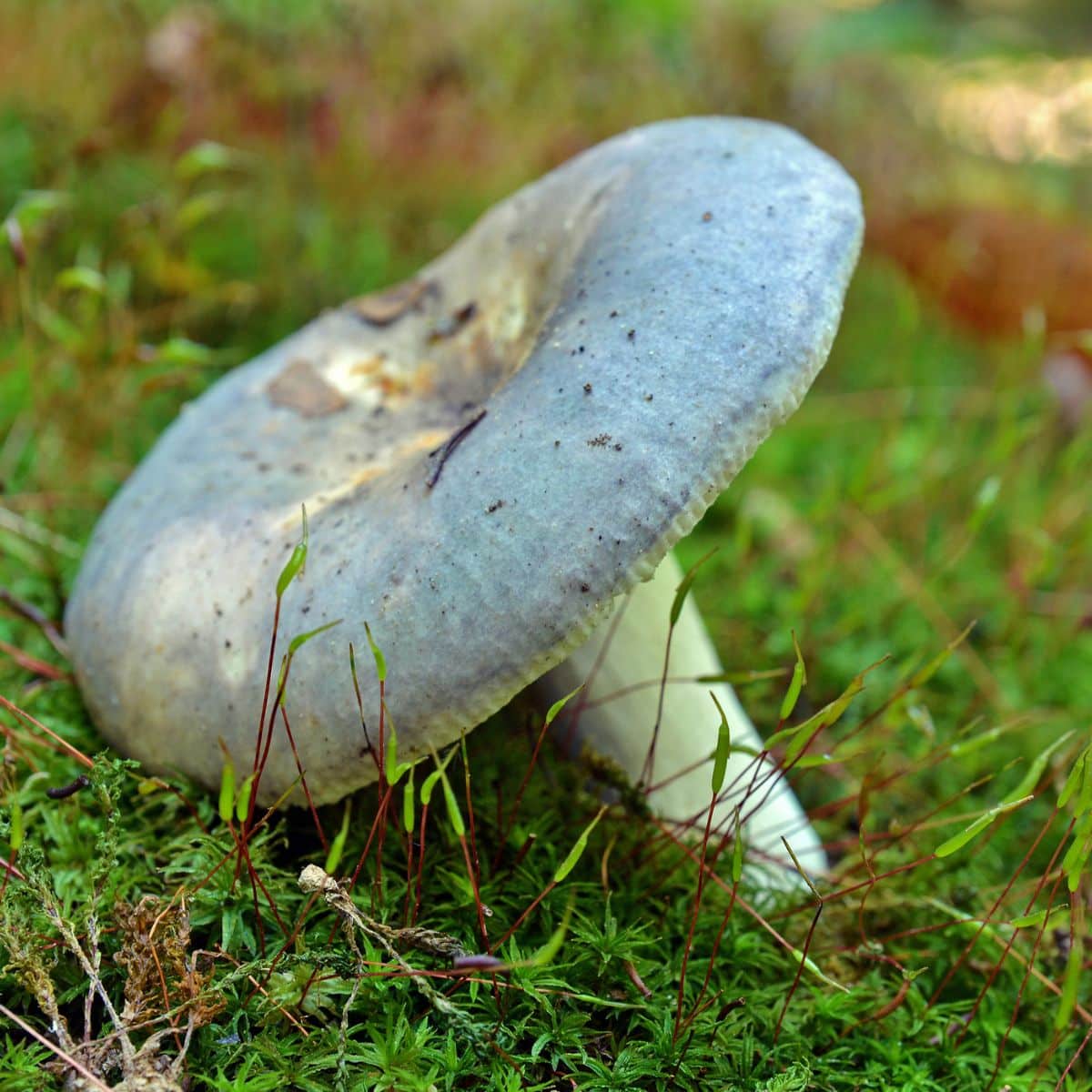
Death Cap (Amanita phalloides)
This dangerous and very deadly amanita species resembles the quilted green russulas only in passing. It has a greenish cap and white gills, and a whitish stem. But it also has a white cup (volva) around the base of the stem and a skirt around the top of the stem. This is one reason it is so important to dig up and check the base of any mushroom you forage for the table – that volva at the base is a crucial giveaway for an amanita species.
The death cap also doesn’t have a cracking or mosaic design on the top. But its yellowish-brown-green cap can look a lot like R. crustota without the definitive quilted pattern.
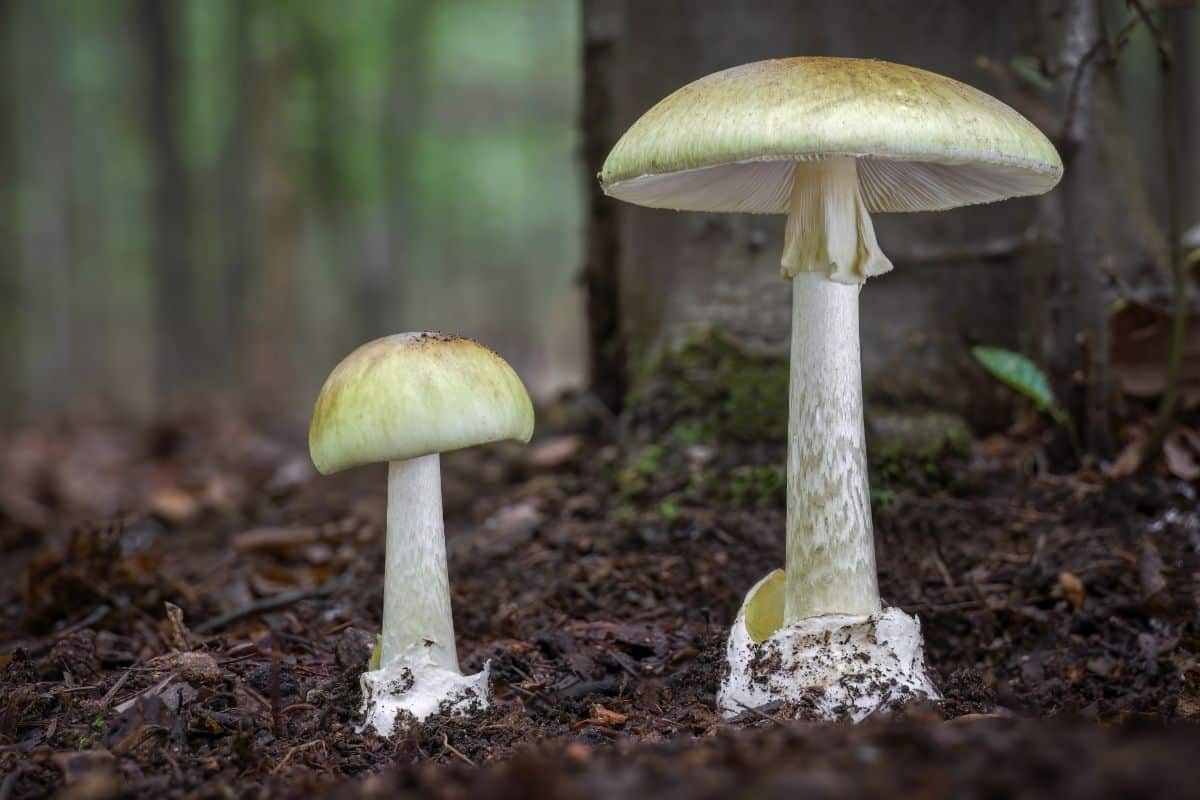
Foraging Russulas, aka Brittlegills
If you want to forage quilted green russulas, go into the woods prepared. These mushrooms are extremely fragile; they’ll break apart easily and create a mess of mushroom bits in your bag or basket if you’re not careful. Even when you are super careful, they are very prone to breaking.
Bring a separate basket or bag specifically for Russulas to try to preserve them. And, make it a decent sized one. When these species are fruiting, it is often in great numbers.
It also can be quite the challenge to find these mushrooms without a boatload of bugs. Bugs and slugs LOVE these mushrooms. You can usually tell how infested the mushroom is by cutting the stem — you’ll see all the bug holes.
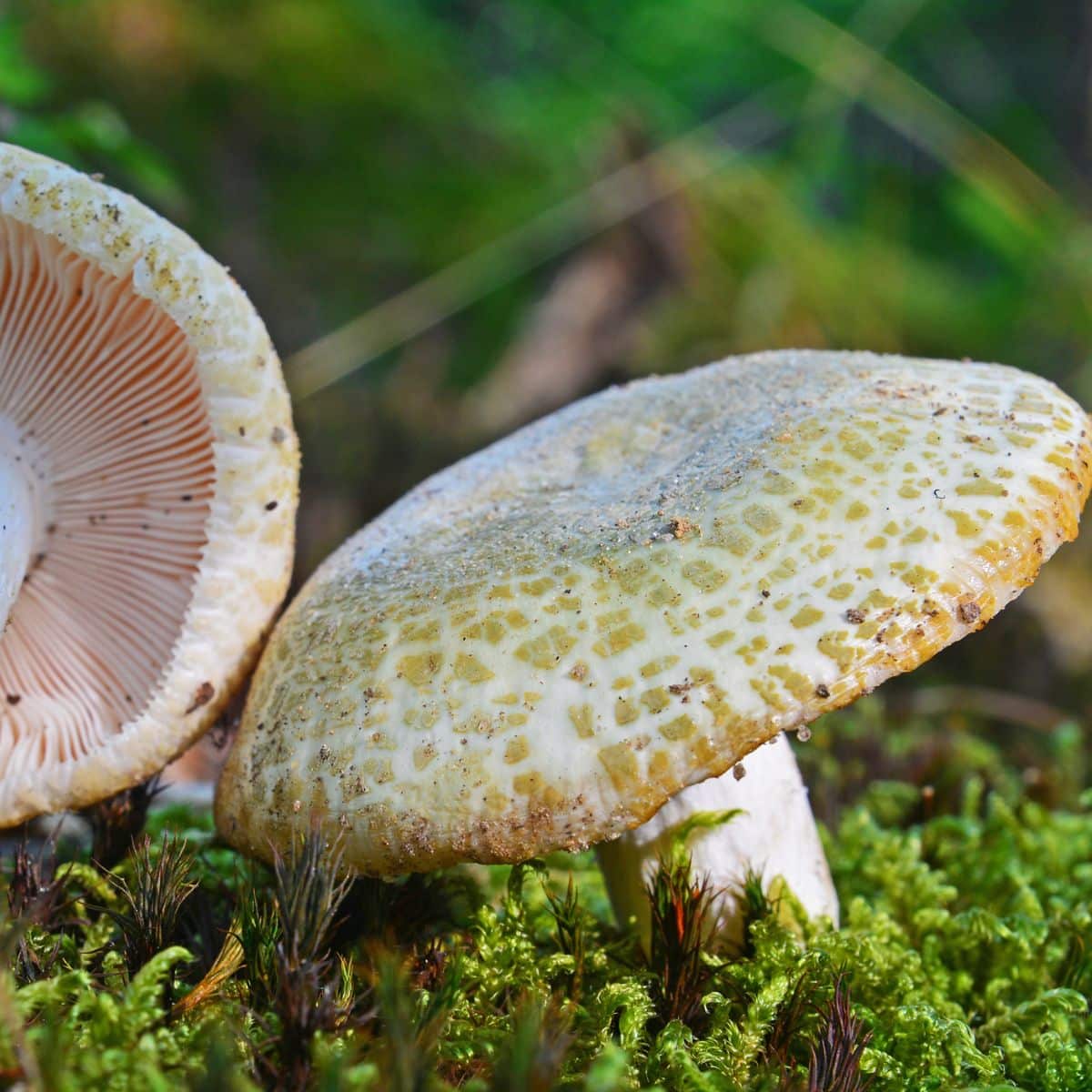
Quilted Green Russulas: Edibility and Culinary Uses
Quilted green russulas are highly prized in many kitchens. They are nutty and sometimes mildly sweet. Drying the quilted russula improves the nutty flavor.
A simple and popular preparation method is sauteing them in butter with salt and pepper, then finishing them off with fresh herbs and a squeeze of lime. Keeping the caps whole during cooking is recommended for those who want a meatier texture. Alternatively, slicing and adding them to stir-fries is another tasty option. Boiling russulas for a few minutes before breading and frying them is another method that makes them irresistible. Serve with a squeeze of lemon and you have a delicious side dish.
In Eastern Europe, they are commonly pickled. This turns them into a crunchy, savory treat.
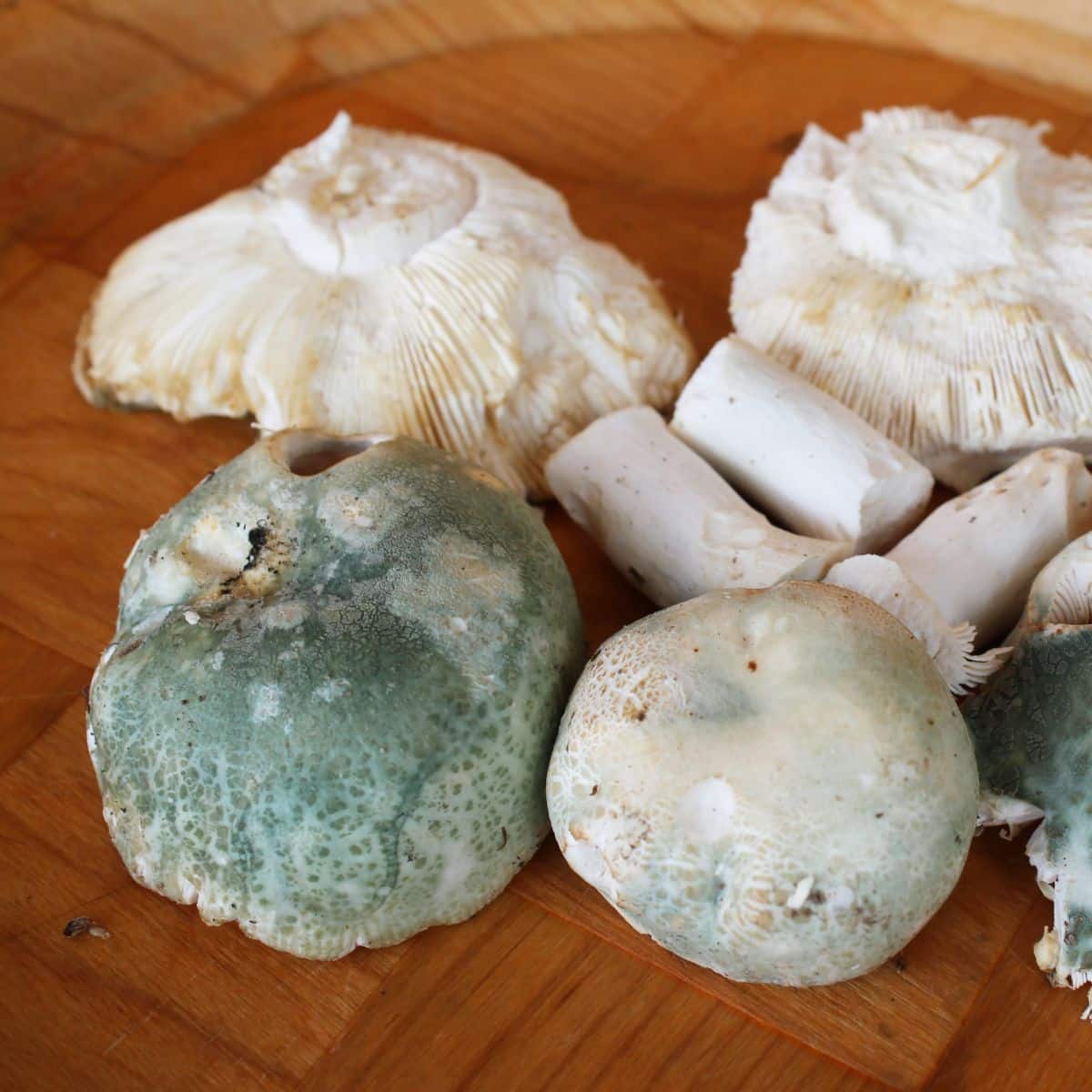
Environmental Uses For The Quilted Green Russulas
The quilted green russulas have a special enzyme called laccase that breaks down dyes. Laccases are important in the textile industry as a natural, more environmentally friendly way to treat wastewater and remove dyes.
This mushroom has also shown the ability to, to a small extent, bioaccumulate the trace metals iron, copper, and zinc.
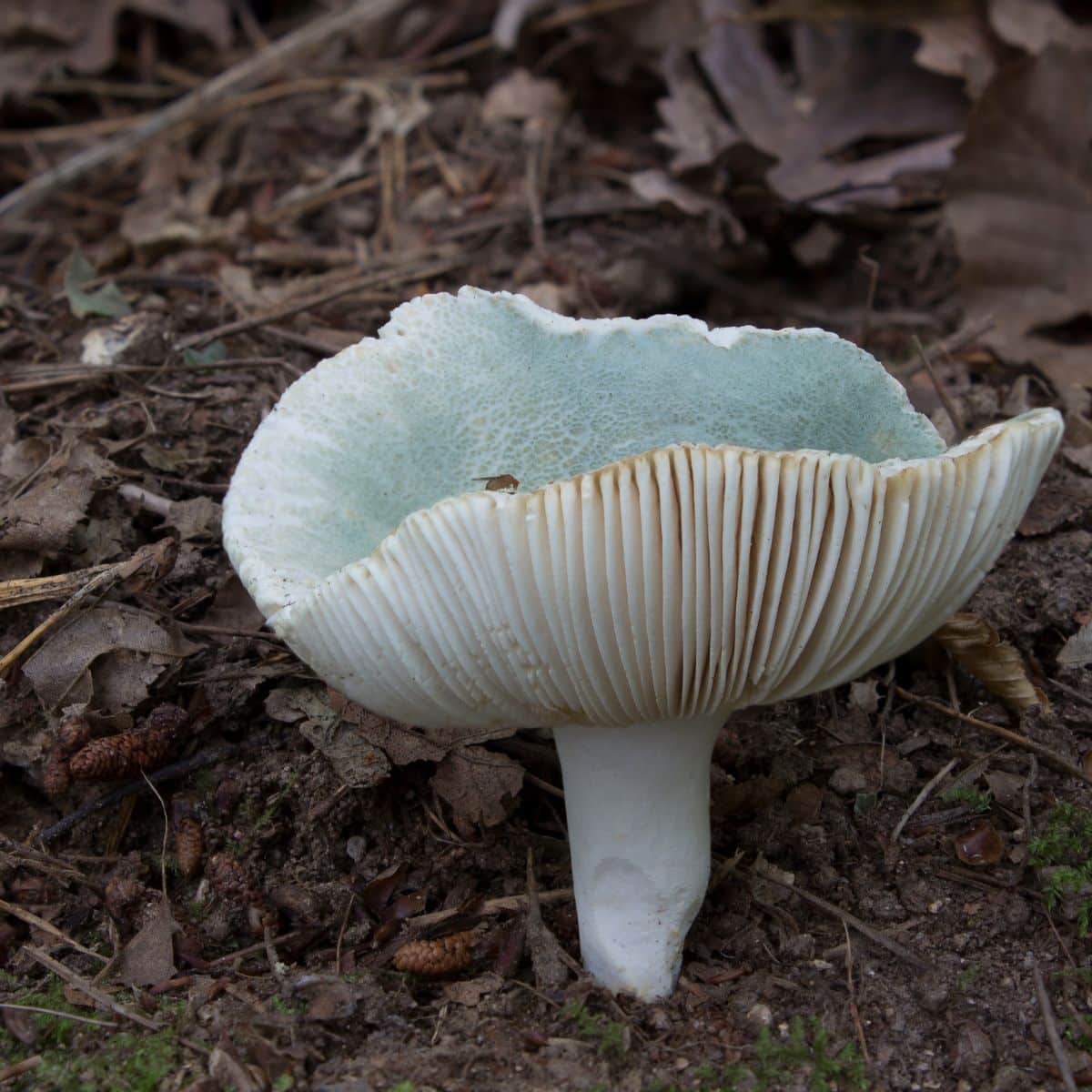
Common Questions About Quilted Green Russulas
Are green-cracking quilted Russulas toxic?
No, green cracking Russulas are not poisonous. They are edible and highly valued mushrooms foraged in many parts of the world.
What distinguishes Russula parvovirescens from Russula virescens?
Russula parvovirescens differs from Russula virescens primarily in size. Its caps are smaller, measuring 4–8 cm (1.6–3.1 inches) in diameter, and it has a stem that is up to 6 cm (2.4 inches) long and 2 cm (0.8 inches) thick.

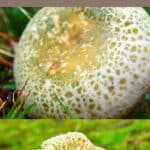
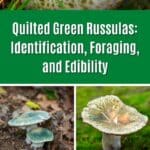
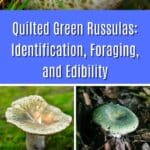
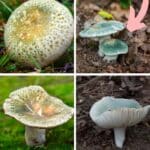

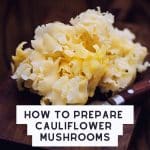
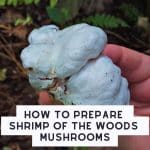
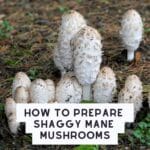
Leave a Reply